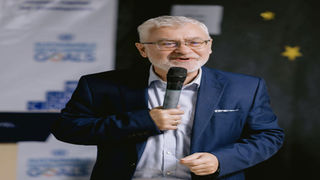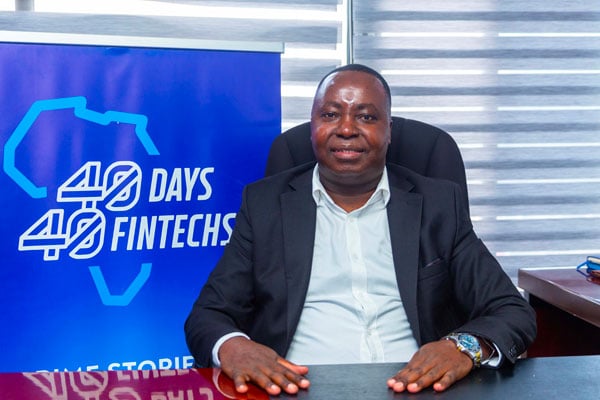
Dmitry Pozhidaev, the head of United Nations Capital Development Fund. PHOTO/courtesy
|Prosper
Prime
Dmitry: Northern Uganda is still under-utilised for exports
What you need to know:
The Development Initiative for Northern Uganda has for the past five years been partially implemented by United Nations Capital Development Fund (UNCDF) with financial backing from the European Union and Ugandan government. Following its conclusion in an interview with Prosper magazine’s Derrick Kiyonga, Dmitry Pozhidaev, the head of UNCDF, inter-alia, explains what comes next after the conclusion of the project.
How was the Development Initiative for Northern Uganda (DINU) conceptualised?
The component implemented by UNCDF was part of the bigger Development Initiative for Northern Uganda (DINU). So, there are two aspects to your question. One is how the bigger Development Initiative for Northern Uganda was conceptualised.
And then how did the smaller component within the bigger program that was implemented within the UNCDF conceptualised? For the first question, the new initiative was conceptualised as part of the EU assistance to Uganda based on the joint analysis of the critical needs of Northern Uganda - which was performed by the EU and the Government of Uganda.
When you think about the government of Uganda it wasn’t the central government, so to say, it wasn’t only the Office of the Prime Minister but it’s also ministries, departments and agencies. Local Governments were also active participants in the design process and they contributed significantly to how the programme was conceptualised and to how it was eventually implemented.
Then on the part that was implemented by UNCDF, we applied an analysis of UNCDF’s comparative advantage to the bigger programme and we tried to identify how based on unique expertise within UNCDF can create value for the bigger programme.
We collaborated with our Ugandan partners during this process. Again, sector ministries, departments, agencies and Local Governments. We cooperated with Local Government associations like the Uganda Local Government Association and Urban Authorities Association.
We worked with financial sector institutions, for example, Uganda Development Bank; Private Sector Foundation of Uganda; non-government organisations, and representatives of civil societies.
What was UNCDF’s role in DINU?
UNCDF has a unique financial mandate within the United Nations System. When the organisation was established by the General Assembly in 1966, it was entrusted with complementing the sources of capital in developing countries through grants, concessional loans and guarantees.
This implies that UNCDF’s mandate isn’t symmetrically specific. It is not linked, exclusively as the case is with many other organisations, to particul
ar issues for example healthcare, education, and transport.
We are trying to design and implement areas that offer financial solutions to a broad range of various sectors. This is why UNCDF’s participation in DINU ran across all elements of the bigger programme.
And that bigger programme just to remind the public, includes three major components: one, rehabilitation of road infrastructure at the local level. The second component dealt with food security and the third component dealt with good governance.
When it comes to food security, we established a very successful financial facility which is called START (Support to Agricultural Revitalisation and Transformation). This facility supports small and medium agribusinesses to expand their operations by getting access to affordable low-term finance.
We also have a road component of the DINU. We put in place a district road fund structure that allowed districts to identify, design, contract and implement rehabilitation breaks of over 500 kilometres of roads throughout Northern Uganda.
Lastly, in terms of good governance, we applied solutions that help Local Governments to expand their fiscal space and raise additional revenues by applying the Integrated Revenue Administration System, applying advanced asset management procedures; implementing the local revenue enhancement initiatives as well as creating transparency and streamlining the internal administrative and operational processes in Local Governments. The final objective, again, is improving the fiscal position and expanding their capacity to deliver goods and services to their populations.
What are the key pillars of DINU?
The key pillars of DINU include food security. So, food security was contributed to by many other organisations other than UNCDF including our partners within the UN system such as UNICEF, for example, The second component dealt with enabling infrastructure for economic development and a major element in there was the rehabilitation of the secondary access roads.
Why did you centre on those pillars?
Well, I have just mentioned that the distinctive feature of DINU is that it cuts across many areas and components. Such programmes in development areas are known as area-based programmes. And they are trying to create a superior mass of interventions in specific areas yet in many sectors – at the same time in a mutually linked manner.
So, the pillars were based on the critical needs identified in that area. The critical needs were established through a consultative process with the Government and Non- non-government actors in Uganda. We focus on climate change which is a reality and which is affecting the northern part of the country probably more than other parts of Uganda.
The second area which is related to the development and construction of the economic supporting infrastructure recognized two issues: The under-utilised potential of northern Uganda as an export hub for the country. We know that northern Uganda borders Southern Sudan, it borders the Democratic Republic of Congo but the export between these neighbouring countries remains marginal.
There is a potential to expand it and contribute to the economic development of northern Uganda.
Why did you focus on Northern Uganda?
DINU was developed and designed with close consultation with the government of Uganda. So, it was the government of Uganda that drove the thinking of the European Union and other partners on how best European Funding can be applied to promote development in Uganda.
Northern Uganda has seen a number of various programmes such as NUSAF [Northern Uganda Social Action Fund] for the past two decades if not more but those programmes are generally quite sector-specific.
The distinctive feature of DINU is that it cuts across many sectors. So, Northern Uganda was chosen because the government of Uganda considered development in that part of the country priority. And because the European Union as well as the other implementers including UNCDF recognised the priority and accepted it as their own.
Your concluding remarks?
One of the main issues raised was whether the end of DINU marks the end of development in northern Uganda. No, it doesn’t. We shall continue engaging with northern Uganda and Uganda at the local government level. At the level of private sector entities and in that respect, we have already launched two programmes: One is the second phase of START facility. The second phase has a bigger budget envelope and covers the entire territory of the country but projects from Northern Uganda will be given priority.
The second initiative was started last year with the participation of Belgium, Sweden and we expect a big contribution from the European Union in the near future.





